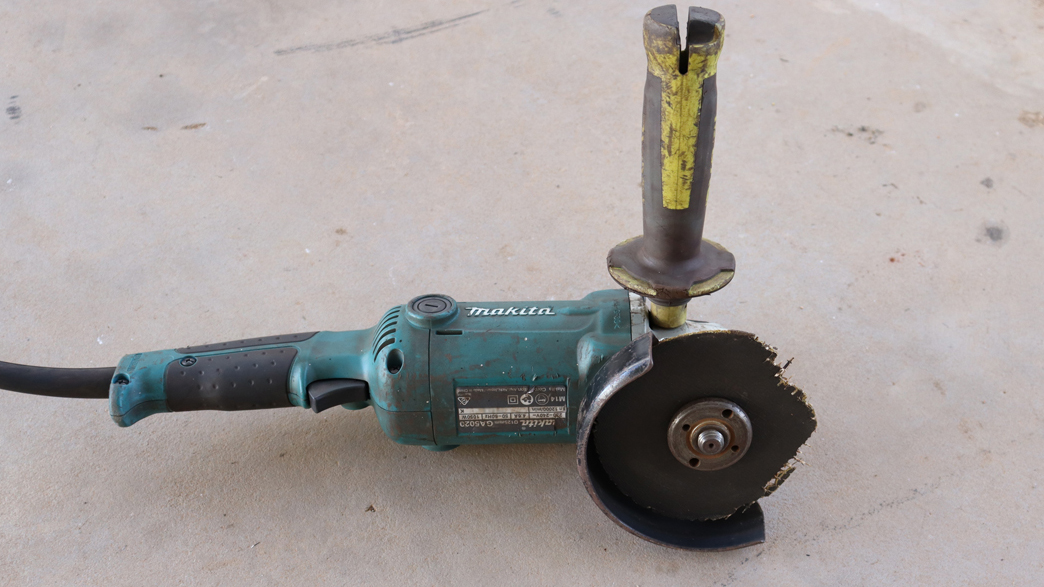Four workers injured in separate angle grinder incidents
Background
Four separate angle grinder incidents injuring Territory workers have occurred within a five week period.
Incident One
A young apprentice boilermaker was using an angle grinder to cut plates off a bumper bar when the grinder kicked back into his hand and the cutting disc broke. The apprentice required surgery for over five hours and was lucky to not have lost his thumb.
Incident Two
A worker was using an angle grinder to cut sheet metal for ductwork when the grinder ‘grabbed’ and kicked back, lacerating the workers hand. A handle was not attached to the grinder when the incident occurred.
Incident Three
A first year apprentice was cutting a section of metal frame using a 5-inch angle grinder, when metal particles entered his eye requiring medical treatment. The incident occurred even though the apprentice was wearing safety glasses at the time of the incident.
Incident Four
A construction worker was injured and required surgery when the angle grinder he was holding kicked back into his hand. The worker was using an older model 9 inch grinder that did not have a safety switch, when he accidently hit the start switch before he had full control of the grinder.

Disclaimer
The above information is based on preliminary findings from NT WorkSafe’s initial enquiries. Enquiries are ongoing to determine the cause of the incident and the appropriate regulatory response.
Safety Information
Angle grinders are a dangerous power tool if used incorrectly and have caused a number of serious injuries in the Northern Territory, and there have been some deaths nationally caused by angle grinders. The main causes of injuries are being hit by flying particles from the item being ground or cut, being hit by fragments of the grinder disc if it breaks and being cut by the grinder when it kicks back.
NT WorkSafe strongly urges all workplaces using angle grinders to consider the following:
- Undertake Hazard Identification, Risk Assessment and Control (HIRAC) before starting any job. The Hazard Checklist, which is Appendix C of the Managing the risks of plant in the workplace Code of Practice can assist with this process.
- NT WorkSafe recommends that you ensure the right tool is used for the material you are cutting. Consider if tools like mitre saws, cold saws or gas cutting kits (i.e. oxy-acetylene) are a safer option for the job.
- Due to the increased risk of injury, consider other alternatives before using a 9-inch (230 mm) angle grinder.
- Also using older model grinders that don’t have automatic cut-off or dead-man switches is not recommended.
- Make sure the worker has the appropriate information and training (including the manufactures safety instructions), and is competent in using an angle grinder.
Angle grinder selection
Select an angle grinder that has:
- An automatic cut-off or dead-man switch.
- A removable side handle that can be attached to suite a left or right handed user.
- Moveable guards that can be repositioned.
Discs
- Make sure the correct disc type is used for the work being done and is suitable for the material being cut or ground. Also make sure the flange and locking nut is compatible with the disc used.
- Make sure the size and maximum operating speed of the disc is correct for the grinder.
- Replace damaged or worn discs. Discs that have been dropped should not be used.
Guards and handles
- The guards and handle supplied by the manufacturer must be used.
- The guard should cover half the disc and be positioned between the disc and the user.
Personal Protective Equipment
- Wear eye protection such as wide vision goggles, safety glasses or face shields.
- Wear tight fitting gloves and clothes to preventive entanglement.
- Wear ear muffs for hearing protection.
Supervision
- Provide appropriate supervision for inexperienced workers.